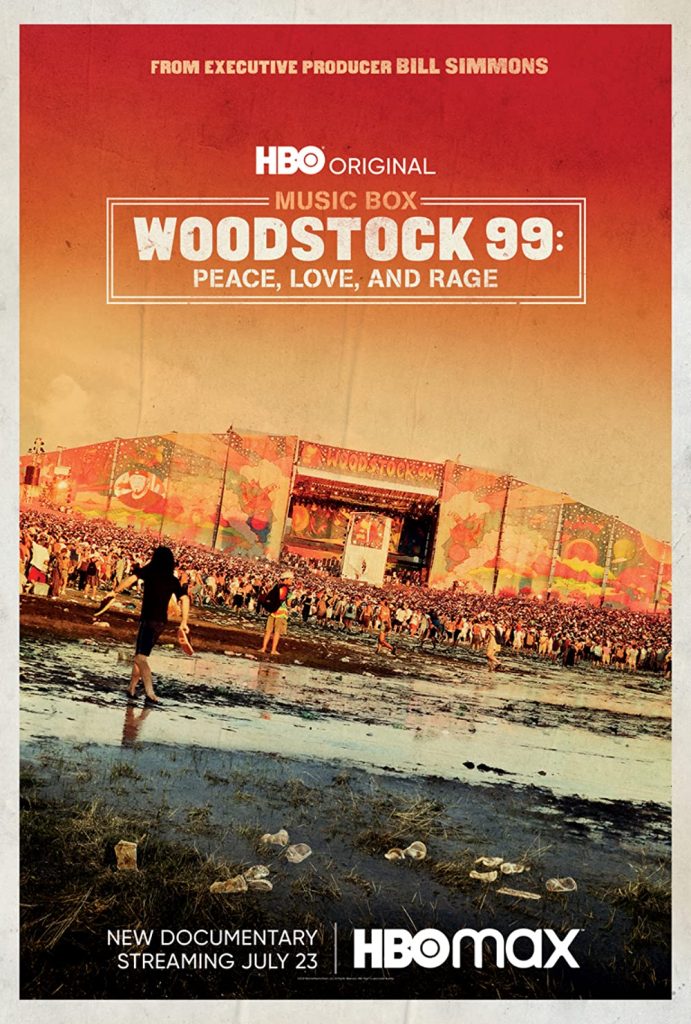
Festivals are slowly coming back this summer in spite of some remaining viral concerns, and at this year’s Lollapalooza, Limp Bizkit performed with frontman Fred Durst in a very entertaining set, looking grey-haired with red shades. He almost resembled Commissioner Gordon from Batman, far different than the baseball cap-sporting king of the frat boys he was during Bizkit’s performance at Woodstock 99. HBO’s new documentary about the infamous three-day event Peace, Love, and Rage, directed by Garret Price, puts the spotlight on them and the other groups that made up the lineup for the 30th anniversary of the 60’s flower power celebration.
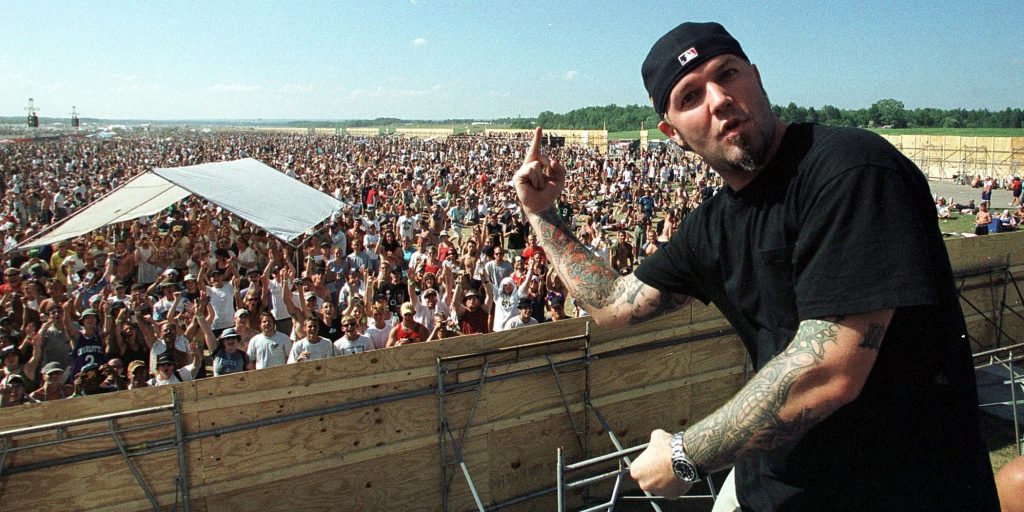
Unfortunately, what was supposed to be a bridge between two generations became a complete disaster that potentially may have killed the Woodstock brand for the foreseeable future. This entry from HBO’s “Music Box” series is a search to determine who deserves the blame for what exactly went wrong 22 years ago. It presents a variety of perspectives from both those involved in the event and commentators reflecting back, and it does so without forcing one particular side or argument down the audience’s throat- making for fascinating viewing, but the kind that could also potentially divide some of the audience, though.
The primarily young, Generation X audience walking into Griffiths Air Force base are greeted by a punk mural promising it’s “definitely not your father’s Woodstock”, which would prove to be all too tragically true. Techno icon Moby recounts looking at the event’s lineup and feeling puzzled at the nature of these acts. What were bands like Metallica, Offspring, Megadeth, Rage Against The Machine, Korn, and Limp Bizkit doing on a card that was based around a “peace and love” aesthetic?
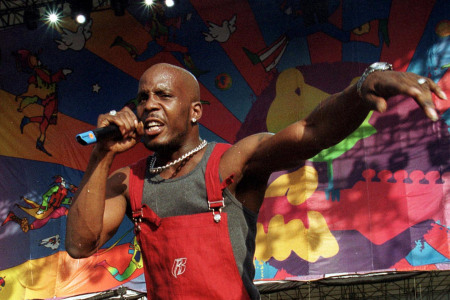
Cultural critic Wesley Morris describes his shock at DMX leading thousands of white fans in the crowd through N-word-laden chants during his performance. He’s not wrong for said shock, and while this doesn’t make it okay by any means: growing up during that era, I can confirm hanging around a diverse group of friends that didn’t think this to be a big deal as we obviously do nowadays.
Later that Friday night, Korn takes the stage in a set I remember listening to on the radio live. It’s pretty damn disturbing reading accounts of the intensity of those pits, let alone the horrifying attacks and alleged assaults that were reported during some of these performances, while I was totally ignorant of that, just enjoying Jonathan Davis hype up the crowd at the time. It gets so bad at one point that the Offspring has to pause their set in order to tell some of the crowd to knock it off.
Watching this documentary reminded me so much of my high school freshman years, as I vividly remember the pop culture “war” of sorts between the harder-hitting rock and hip-hop artists, and the bubblegum pop sounds of acts like N*Sync, Britney Spears, and the Backstreet Boys. Much of those heavy bands booked for Woodstock 99 were meant to appeal to the alternatives from the pop scene.
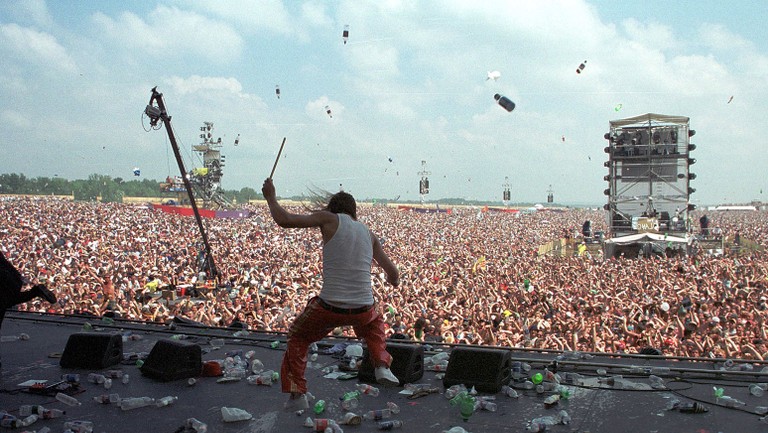
TRL host Carson Daly, who found himself in the center of this war, reported on the scene for MTV, and he goofily smiles as the hot, sweaty, mud and gunk-smeared crowd of college bros let him have it with garbage. Vendors were apparently charged hundreds of dollars to set up shop at Wood99, leading to insane prices that skunked the already sour mood of the audience even further.
Then Kid Rock struts out to the filth-covered audience, and I forgot he had on this white fur coat in the blazing heat (he didn’t perform in it, indicating he’s not completely crazy). Showing how much of a bro-centric event this was (just Sheryl Crow, Alanis Morrisette, and Jewel were the headlining leading ladies), Kid launches into what he considers his deepest form of political commentary for the times, by calling Monica Lewinsky a “ho” and then-President Clinton a “pimp”. By now I’m like “what the hell is even going on?”
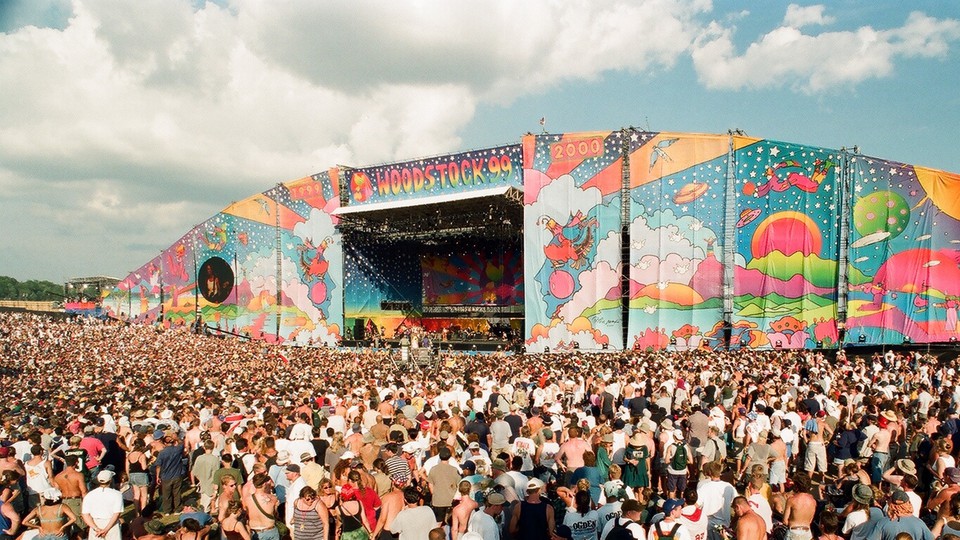
Some of the artists genuinely try to meet the Woodstock mood, with Wyclef Jean paying tribute to Jimi Hendrix by lighting his guitar on fire and smashing it, but it doesn’t have the same effect on a crowd of twenty-somethings raised on hip-hop and nu-metal. During Creed’s set, Scott Staff brings out a member of the Doors to play with them, but the fans are like “who?” Staff is just so earnest, he’s like Leonardo from the Ninja Turtles if he was a rock musician. He has no idea how bad things actually are on the ground, and they’re about to get worse.
It’s easy to look back on Limp Bizkit through a 2021 lens and poke fun at them, but I’ll admit I still have a few songs by them in my Spotify. Fred Durst definitely knows about said culture war when he says “how many of you like N’SYNC?” during their Saturday evening set in order to angrily rile up the mosh pit. But even Fred has to eventually cool himself down, and halfway through the set he states “Hey, I wanna get my groove on!” before the band plays “Re-Arranged”, one of their few mid-tempo tracks.
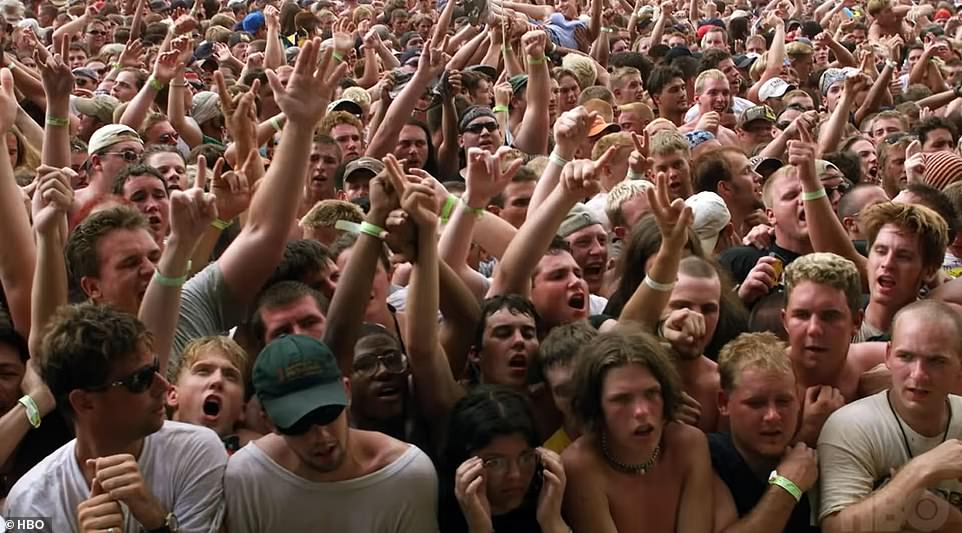
They quickly pick it back up with “Break Stuff”, and by now kids are reportedly going to the (apparently disinterested) security team claiming “they gotta stop this show, kids are getting hurt”. Fred discourages this obviously, but considering that RATM and Metallica are to follow shortly after, it didn’t exactly mellow out much.
By Sunday, mobs of guys are running amok, screaming “show your tits” at random women and doing things so awful that I can’t even go into detail here. All I’ll say is I felt like an old southern woman in church at points, thinking “oh lord, take the wheel, this event is possessed by the devil!” Which makes it all the more appropriate that the Red Hot Chili Peppers’ set is marked by a series of massive fires being lit in the audience after numerous teens finally snapped and started tearing down trailers and sets.

Attendees describe being swept up in a mob mentality running amok, and RHCP vocalist Anthony Keidis’s Apocalypse Now analogy is fitting as it looks like bombs had been dropped in the middle of Woodstock. (Funny thing: I get why they’d want to play “Fire” by Jimi Hendrix as the fire department arrived, but maybe you guys could have picked a song that was the opposite? Something with a wetter theme, like “Smoke on the Water” by Deep Purple or something? Just sayin’.)
Eventually, the dust cleared with thousands of dollars in property damage, arrests, and multiple assault charges. The public and media pointed their fingers at numerous elements that led to things falling apart- the incompetence of the organizers, lackadaisical security, and the performers for allegedly whipping the audience into a frenzy. RATM guitarist Tom Morello lay the blame on the event’s rampant corporate greed in a New York Times editorial (he didn’t have kind words about the creeps going after the women, either). It’s easy to see his point considering there was no shade on that Air Force base in over 100* heat, and these kids who are smeared in god knows what have to pay four bucks for a water bottle.
A Woodstock organizer named John Scher is relentlessly stubborn in his defense of the event, seething at what he sees as the recklessness of some of the audience, but that’s pretty much passing the buck. Coachella isn’t perfect and it’s had its fair share of controversies, but the filmmakers hold it up as a more evolved example of how a modern music festival should be run. It seems like Woodstock has to catch a body every year, or else it’s not complete: a concertgoer tragically passed away from heatstroke during Metallica’s mosh pit, bringing Woodstock’s overall kill total between the three big events to five.
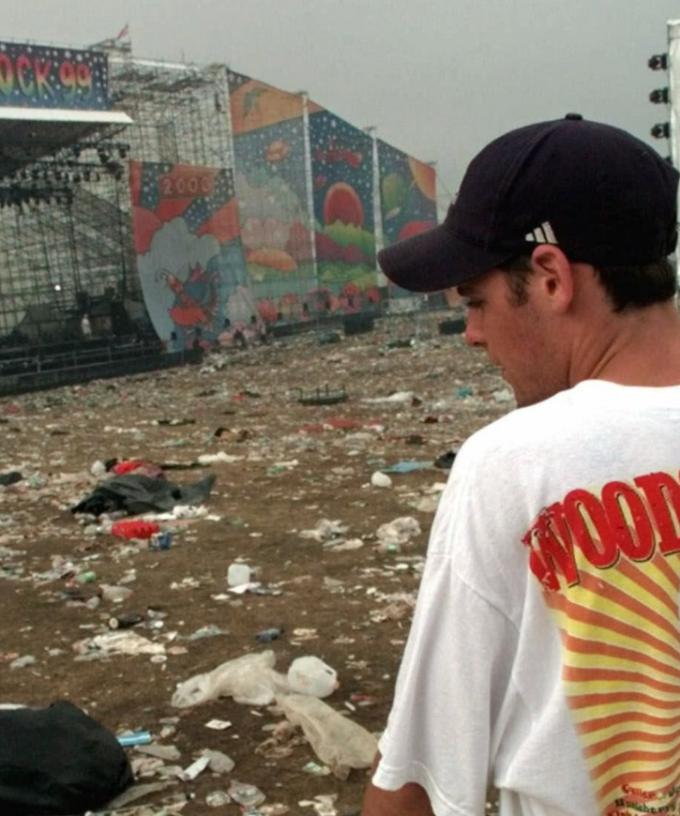
More than two decades later, one can see how a lot of these ugly elements in Woodstock 99 still linger today in modern culture. At the least, we’ve gotten much smarter about how to manage these kinds of big events. But I don’t think it’s quite fair to completely slander these artists in retrospect for expressing themselves. Price and Moby cite the comparative sensitivity of the early 90s grunge scene to the bombastic and lowbrow fury of the nu-metal scene, as well as how Kurt Cobain’s 1994 passing marked a sea change. This is an interesting take but also doesn’t account for how hip-hop had brought a new rawness and honesty to the ears of white listeners of the 90’s (along with DMX, Ice Cube was also in attendance), nor does it consider what I think is the biggest reason for Woodstock 99’s inevitable collapse: not knowing one’s audience.
I’ve read a lot of columns trying to draw a clear line between today’s heated discourse with the aggression we see in Peace, Love and Rage, but to me the main problem with this event was the organizers trying to blend philosophies that couldn’t co-exist, the peace-promoting hippie politics of the 60s colliding with late 90’s disaffection and fury. There are plenty of ways for different generations to find common ground with each other, but this was an example of how not to achieve that, an event that didn’t know what message it wanted to put forward. When there’s no respect towards the desired audience from the makers of something (be it a lack of respect in terms of prices, keeping its guests safe, and making sure they’re properly cared for), the consumer isn’t going to respect them in return.
So I’ll gladly recommend this documentary as an interesting footnote to close out a memorable decade. Even amidst all of the problems here, the music of that era still remains fascinating, and for both good and for ill it’s a neat time capsule. If you’d had the chance to watch it, let us know your opinion as always on FAN’s social media!
